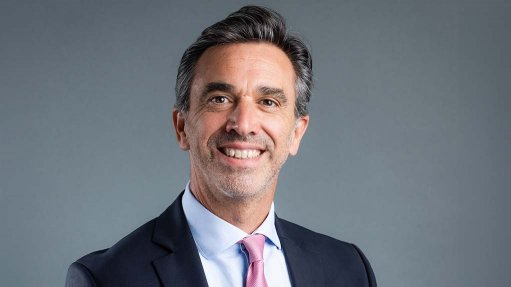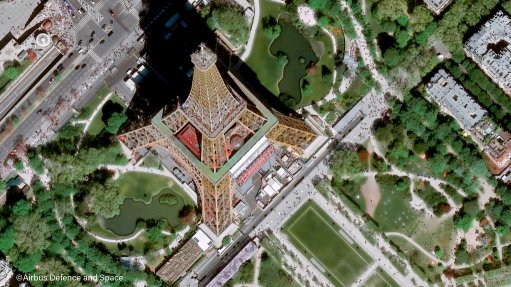Discontinuance of Africa’s 2G, 3G networks to be gradual and targeted
While there are benefits to phasing out legacy networks, such as second-generation (2G) and third-generation (3G), progress in sub-Saharan Africa will be slower and more targeted than in other regions.
Globally, operators are – or, in the case of developing economies, are considering – phasing out 2G and 3G networks to refarm and optimise existing spectrum to combine it with other bands to enhance fourth- generation (4G) and fifth-generation (5G) services, which will deliver faster data speeds, lower latency and enhance connectivity, according to a new report by Ookla.
However, sub-Saharan Africa’s transition is lagging, owing to economic, social and infrastructural factors, including a dependence on existing legacy ecosystems, a high cost barrier for operators and consumers and an unequal distribution of new network infrastructure.
Across Africa, Ookla says that 2G and 3G network sunsetting is evolving “very slowly”, with no country on the continent having completed the transition yet, as these networks form the backbone of mobile communications for a large proportion of the population, enabling vital services such as voice and mobile money transactions.
The report shows that, while 3G remains the most prevalent network technology in sub- Saharan Africa, the technology’s share of connections will fall below 50% in 2025, while 2G adoption will decline to under 10%.
“In addition, 2G will likely remain important during the roll-out of 4G and 5G for years to come because it supports essential consumer services in Africa, including voice, basic information and mobile money transactions.”
By 2027, 4G will overtake 3G, and 5G adoption, while initially slow, will gain momentum during the second half of the decade, reaching 17% by 2030, leading to a fourfold increase in mobile data traffic per smartphone by 2028, a higher rate than in any other region, to 19 GB a month.
“Network sunsetting is more important in sub-Saharan Africa because of limited spectrum availability and the rapid growth in demand for faster-speed data services. As regulators released only a small quantity of spectrum, operators resorted to refarming existing spectrum bands to deploy 4G and 5G services. The low-frequency bands occupied by earlier network technologies are valuable, owing to their excellent propagation characteristics, making them ideal for fulfilling coverage obligations with 4G and 5G,” Ookla points out.
While a delay in transitioning to newer network technologies has significant implications for the ability of the population to access the high-speed Internet vital for socioeconomic development, operators continue to face challenges in investing in advanced network roll-outs while maintaining and expanding their legacy networks to ensure access for all, with a large concentration of 2G and 3G users in suburban and rural areas, as well as along transportation routes.
“Many parts of the continent still heavily rely on legacy technology and will continue to do so in the short-to-medium term. This reliance makes the transition to newer generation networks more challenging and costly. In 2023, 3G represented 55% of mobile connections in sub-Saharan Africa and is expected to represent a third of total connections by 2030,” Ookla comments.
“This shows that many revenue-generating customers are still on legacy networks. Operators are understandably hesitant to risk service disruptions and incur the significant investment and planning required to upgrade the infrastructure, which will make the transition more challenging and lengthier.”
Further, some countries launched 3G less than a decade ago, with network costs not yet fully amortised, Ookla says.
Among the challenges listed by Ookla are the millions of machine-to-machine devices Africa hosts, some of them in difficult-to-reach geographies or embedded in cars and equipment, making replacement or upgrades challenging, as well as the prevalence of basic and feature phones that leads to handset compatibility issues with newer technologies and the higher costs of smartphones and data plans, which represent significant hurdles for low- income populations.
In addition, operators may face regulatory challenges when retiring old technologies, as the spectrum freed from legacy networks may not be readily available for new networks after the switch-off if it is tied to a specific technology.
To mitigate some of these challenges, Ookla proposes a phased, gradual approach to retiring networks, with consideration for affordability and coverage, to maintain digital inclusiveness across Africa.
“The challenges contribute to the slower rate of network sunsetting in Africa, compared with other regions. However, operators can employ various strategies to facilitate the decommissioning process while mitigating the negative impact on revenue and brand,” the company explains, adding that the decision to sunset one network before another should be informed by market conditions, including the number of customers that use legacy networks, the cost of maintaining their operations and the dependence of enterprise services on these networks, besides others.
South Africa is the only country in sub- Saharan Africa with an established plan to decommission 2G and 3G networks by 2027. Most countries, including Nigeria, have not yet set a date.
Despite this, Ookla expects network sunsetting to be in “full swing” from 2030.
Comments
Press Office
Announcements
What's On
Subscribe to improve your user experience...
Option 1 (equivalent of R125 a month):
Receive a weekly copy of Creamer Media's Engineering News & Mining Weekly magazine
(print copy for those in South Africa and e-magazine for those outside of South Africa)
Receive daily email newsletters
Access to full search results
Access archive of magazine back copies
Access to Projects in Progress
Access to ONE Research Report of your choice in PDF format
Option 2 (equivalent of R375 a month):
All benefits from Option 1
PLUS
Access to Creamer Media's Research Channel Africa for ALL Research Reports, in PDF format, on various industrial and mining sectors
including Electricity; Water; Energy Transition; Hydrogen; Roads, Rail and Ports; Coal; Gold; Platinum; Battery Metals; etc.
Already a subscriber?
Forgotten your password?
Receive weekly copy of Creamer Media's Engineering News & Mining Weekly magazine (print copy for those in South Africa and e-magazine for those outside of South Africa)
➕
Recieve daily email newsletters
➕
Access to full search results
➕
Access archive of magazine back copies
➕
Access to Projects in Progress
➕
Access to ONE Research Report of your choice in PDF format
RESEARCH CHANNEL AFRICA
R4500 (equivalent of R375 a month)
SUBSCRIBEAll benefits from Option 1
➕
Access to Creamer Media's Research Channel Africa for ALL Research Reports on various industrial and mining sectors, in PDF format, including on:
Electricity
➕
Water
➕
Energy Transition
➕
Hydrogen
➕
Roads, Rail and Ports
➕
Coal
➕
Gold
➕
Platinum
➕
Battery Metals
➕
etc.
Receive all benefits from Option 1 or Option 2 delivered to numerous people at your company
➕
Multiple User names and Passwords for simultaneous log-ins
➕
Intranet integration access to all in your organisation


















